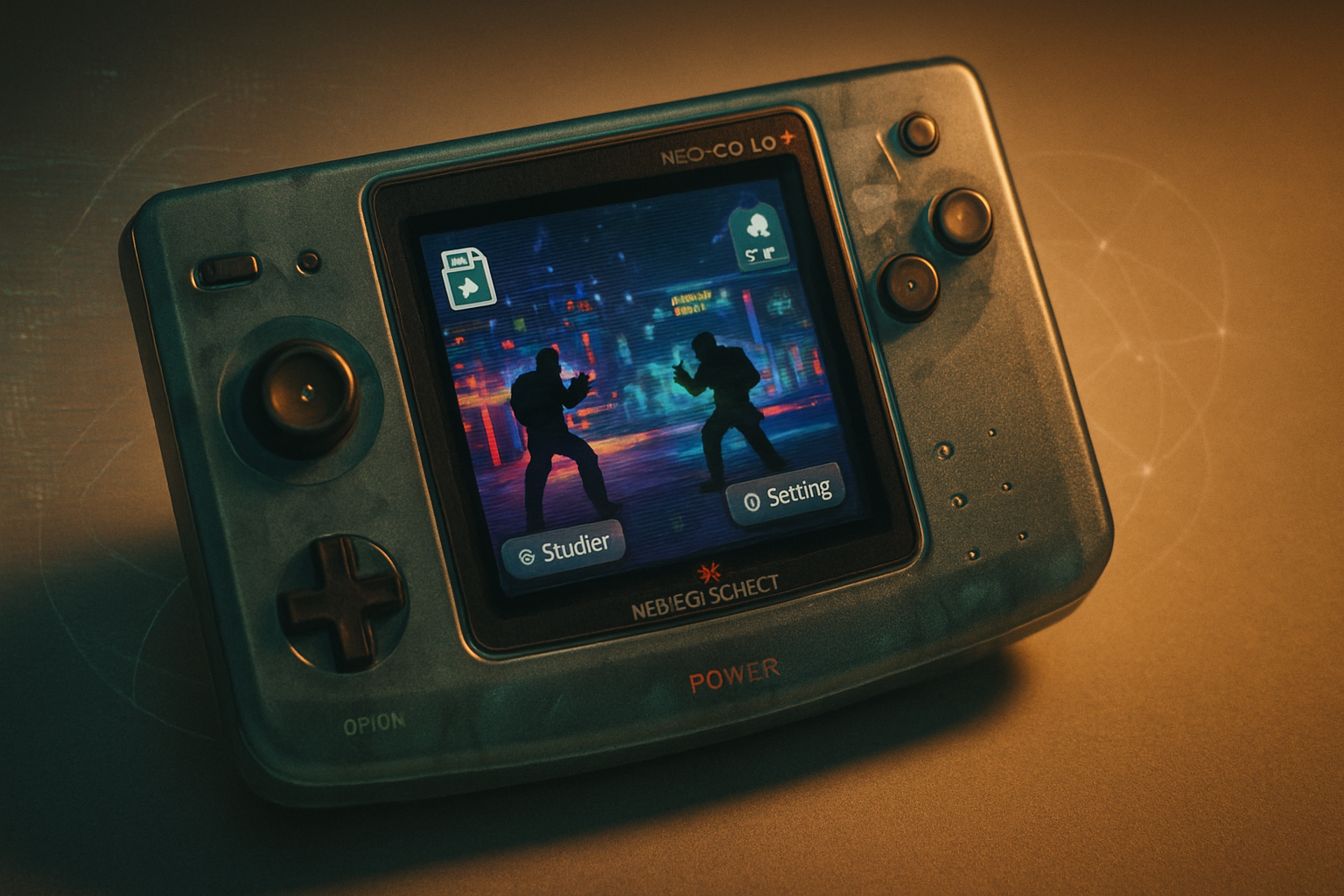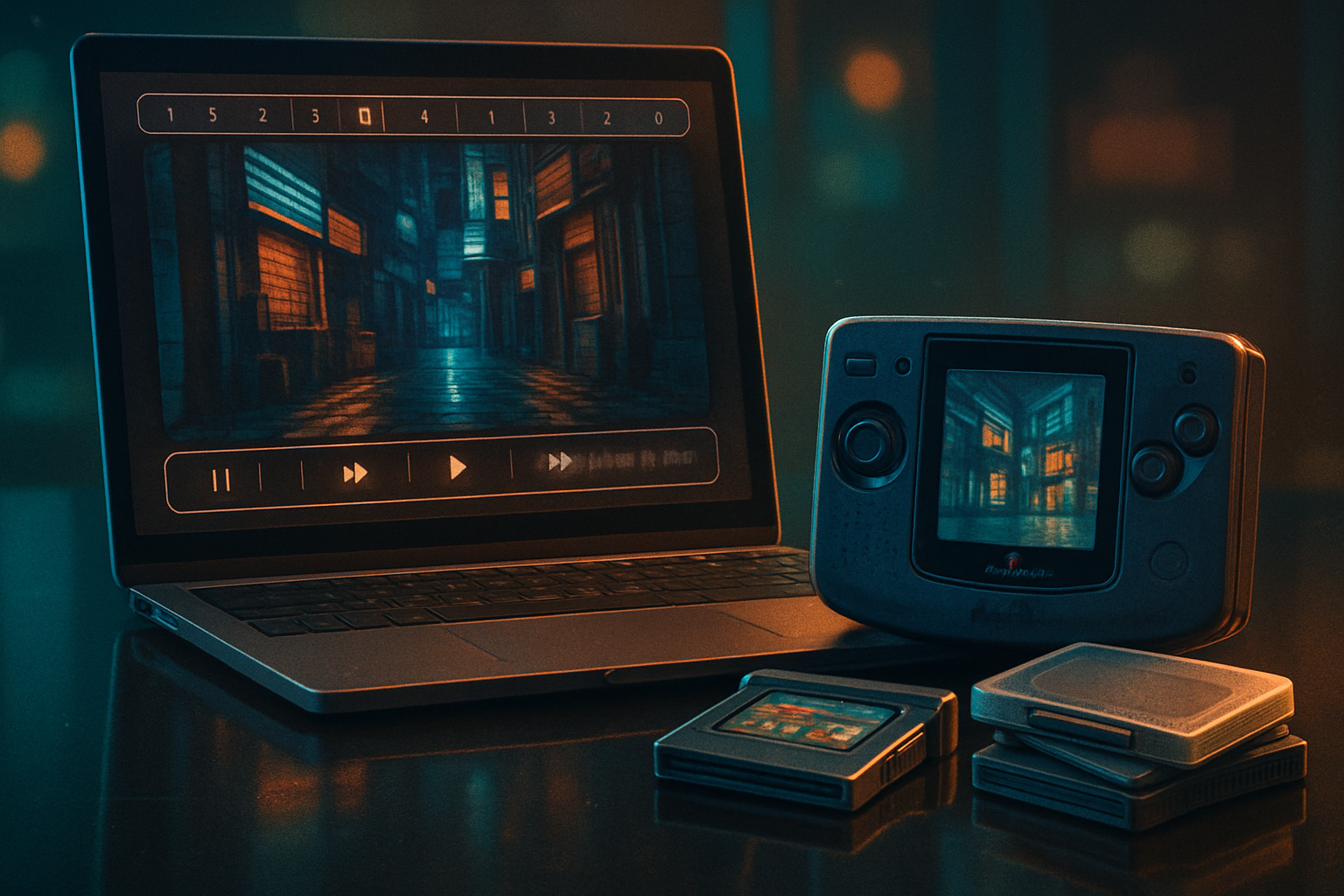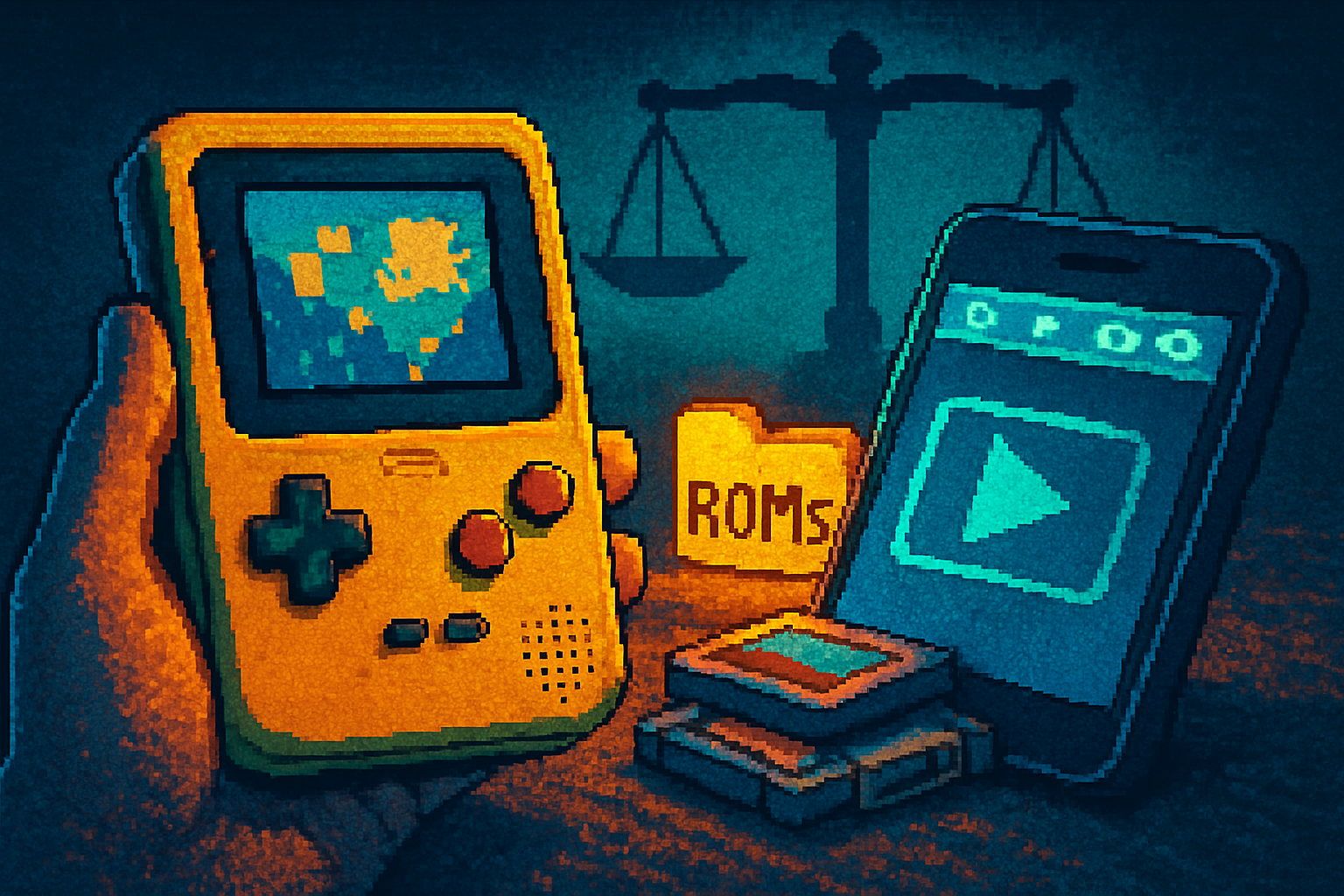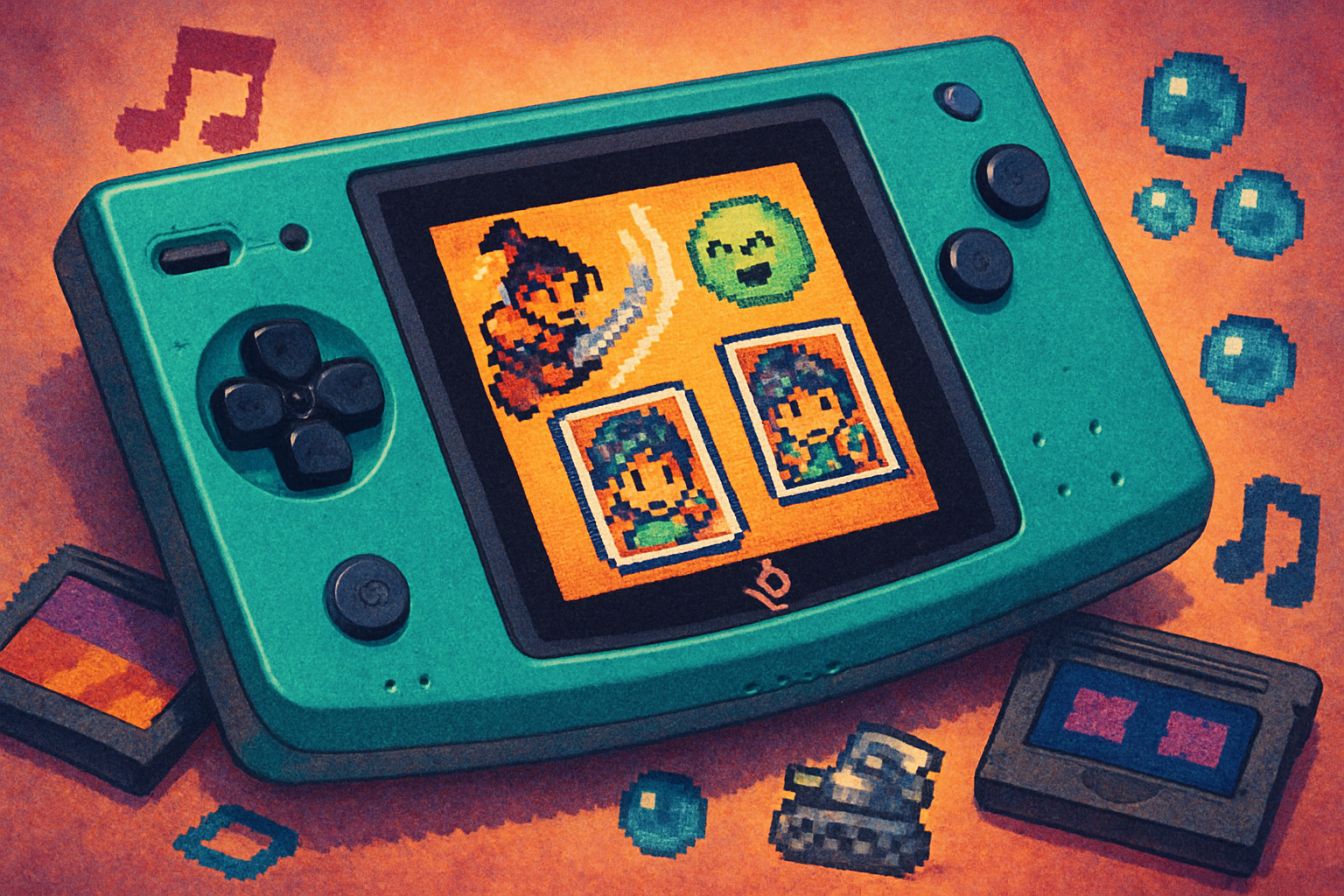· retrogaming · 5 min read
The Neo Geo Pocket Revival: How Emulators Are Breathing New Life into a Forgotten Console
Emulators and fan communities are restoring the Neo Geo Pocket Color from obscurity-improving accuracy, enabling netplay, supporting translations and homebrew, and introducing the system to a new generation of players.
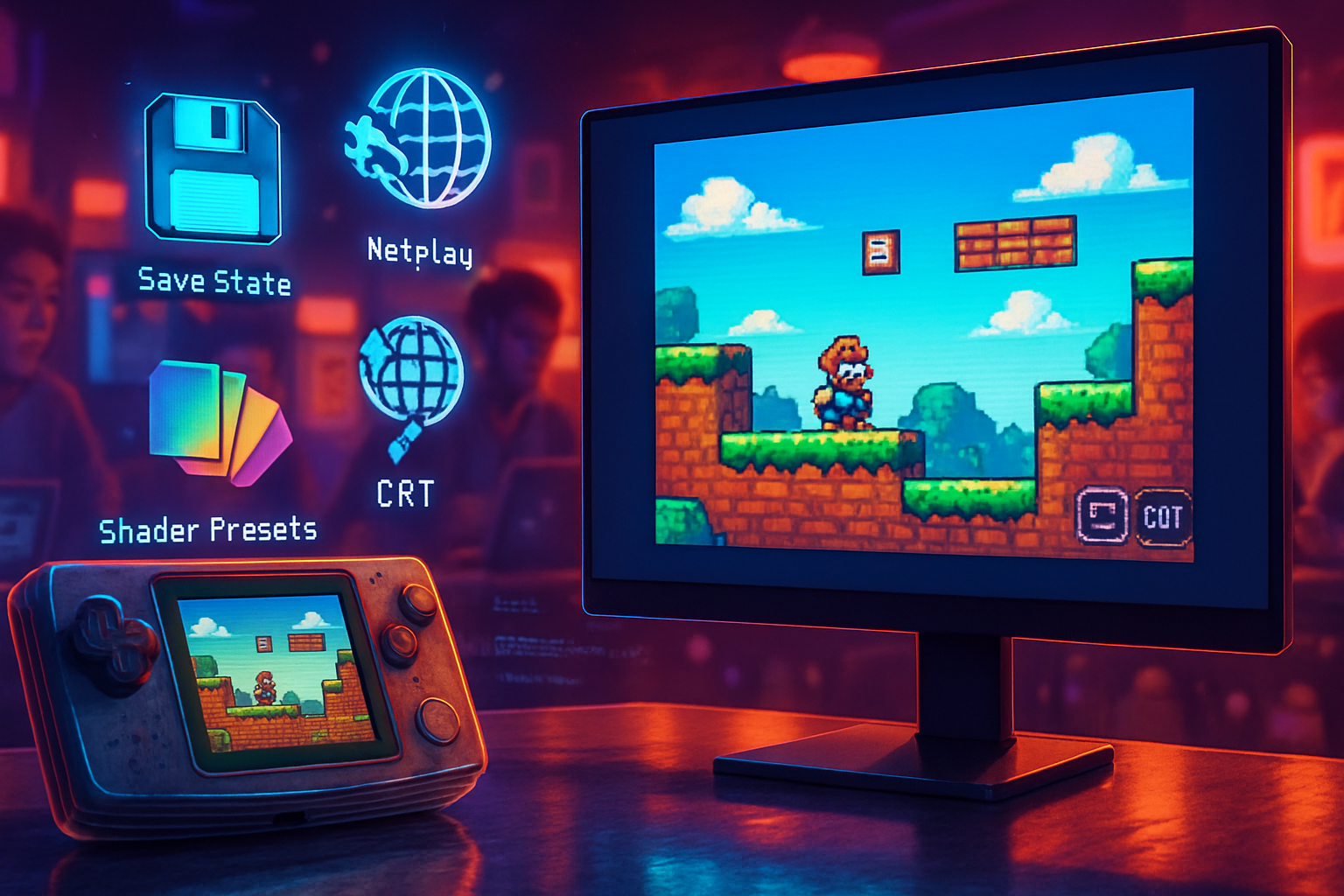
Why the Neo Geo Pocket Color mattered - and why it faded
Released by SNK in 1999, the Neo Geo Pocket Color (NGPC) was a compact, well‑designed handheld with a distinctive library of fighting titles, quirky originals, and sharp 2D visuals. Critics praised its battery life and controls, but it arrived during a transitional era for handheld gaming and SNK’s financial troubles limited its global reach. As a result, a vibrant, high‑quality catalog of games lived largely in collectors’ hands and niche communities rather than in mainstream awareness.
Today, emulation and community projects are changing that. Developers and fans are reviving NGPC titles with more accurate emulation, better accessibility, and modern conveniences that make exploring the system’s library enjoyable for newcomers and longtime fans alike.
The emulator renaissance: what’s changed
Early emulators for the NGPC were often simple, feature‑limited programs that replicated gameplay at a functional level. Over the last decade, several trends have driven a resurgence in quality and interest:
- Improved accuracy - Modern projects emphasize cycle accuracy, correct CPU/PPU timing, and faithful audio reproduction. That reduces glitches and timing bugs that used to plague certain titles.
- Better tools and portability - Libretro cores and multi‑platform emulators mean the same accurate experience is now available on PC, Mac, Linux, Android, and even embedded devices.
- Modern UX features - Save states, rewind, customizable shaders (to recreate the handheld’s LCD look), controller mapping, and per‑game settings make playing older titles more comfortable.
- Netplay and link emulation - Emulators can emulate the NGPC’s link‑cable functionality over the internet, which revives the multiplayer aspect of fighting and competitive games.
Projects like Mednafen and Libretro/RetroArch have played big roles in packaging accuracy and convenience together; MAME’s ongoing work has also added hardware documentation and compatibility improvements for many platforms, including handhelds. See Mednafen and RetroArch for more background:
- Mednafen: https://mednafen.github.io/
- RetroArch / Libretro: https://www.libretro.com/ and https://www.retroarch.com/
- MAME: https://www.mamedev.org/
Technical improvements that matter
Here are the concrete emulator improvements that make NGPC games feel better today:
- Timing and input latency - Better synchronization between CPU emulation and video/audio outputs reduces lag and prevents desynchronization in rhythm and fighting games.
- Palette and color correction - NGPC’s palette quirks could make sprites look washed out or incorrect on early emulators. Modern cores include better palette handling and shader presets to reproduce the handheld’s original look or upscale sprites cleanly.
- Audio accuracy - Emulation of the sound hardware has improved, preserving voice samples and music fidelity that once sounded clipped or wrong.
- Link cable / multiplayer - Netplay support lets two players compete online-or on the same machine with multiple controller inputs-restoring the social element of games like King of Fighters R-1 and SNK vs. Capcom: Match of the Millenium.
- Save systems & cheats - Reliable save‑state and battery‑backup emulation makes preservation and marathon playthroughs less fragile.
Community projects: translations, hacks, and homebrew
One big reason the NGPC scene is alive is community effort. Fans have translated untranslated Japanese releases, produced fan‑made patches, and built homebrew titles that expand the platform’s library.
- Fan translations bring rare or region‑locked stories to English and other languages.
- ROM‑hacking and mod projects fix bugs, rebalance games, or create new content that runs on real hardware and in emulators.
- Homebrew developers are producing new games, utilities, and dev tools-often testing on emulators before flashing cartridges or dumping to flash carts.
These grassroots efforts simultaneously enhance preservation and propel creative experiments that honor the original hardware while stretching its possibilities.
Preservation vs. piracy: a nuanced conversation
Emulation itself is a legitimate method for preserving and studying video game history. Organizations and volunteers use emulators to archive games, document hardware behavior, and make long‑obsolete software accessible to researchers.
That said, distributing copyrighted ROMs without permission is illegal in many jurisdictions. Responsible emulation practices include:
- Using dumps of games you own (where permitted by law).
- Supporting official re‑releases when available.
- Encouraging libraries, museums, and publishers to cooperate with preservation efforts.
For background on emulation and preservation debates, see the technical and historical resources from projects like MAME and the Libretro/RetroArch ecosystem (links above).
Why this matters for new fans
Emulators lower the barrier for discovery. A curious gamer or researcher can:
- Experience curated NGPC libraries with modern conveniences.
- Compare prototypes and translation patches without hunting down expensive cartridges.
- Share speedruns, guides, and video content that spotlight overlooked gems.
Because of emulation, games that were previously the province of collectors are now accessible to content creators, historians, and casual players-renewing interest and sometimes prompting official reissues or anthology inclusions.
Real‑world examples and community hubs
Communities and independent sites provide forums, documentation, and tooling that drive this revival. Some helpful places to explore:
- Neo‑Geo.com - a long‑standing forum for SNK and Neo Geo fans: https://www.neo-geo.com/
- Reddit and other social hubs where players share discoveries, technical tips, and translations.
- Preservation and documentation projects such as The Cutting Room Floor for investigative writeups: https://tcrf.net/
Open‑source emulators and cores live on GitHub/GitLab and often include changelogs showing the steady improvement in compatibility and accuracy.
What the future could hold
The NGPC revival is still early in several respects. Potential future developments include:
- More official re‑releases or licensed compilations prompted by renewed interest.
- Expanded homebrew scenes producing commercial‑quality releases for both flash carts and digital distribution.
- Continued improvements to netplay and accuracy that make tournament‑level play possible via emulation.
- Better tooling for archival work so researchers can annotate cartridge versions, prototypes, and developer notes.
Each step would strengthen the platform’s cultural footprint and help ensure the NGPC’s library is preserved for future generations.
Getting involved (responsibly)
If you’re excited and want to explore the NGPC scene: start by reading emulator documentation, joining community forums, and learning about lawful ways to preserve and play games. Support developers when official releases appear, and participate in or donate to preservation efforts.
Emulation has restored access to many forgotten platforms-Neo Geo Pocket Color is an example of how dedicated communities, paired with improving emulator technology, can resuscitate a system and connect its library to a new audience.
Sources and further reading
- Neo Geo Pocket Color - Wikipedia: https://en.wikipedia.org/wiki/Neo_Geo_Pocket_Color
- Mednafen official site: https://mednafen.github.io/
- Libretro / RetroArch: https://www.libretro.com/ and https://www.retroarch.com/
- MAME - the Multiple Arcade Machine Emulator: https://www.mamedev.org/
- Neo‑Geo community forum: https://www.neo-geo.com/
- The Cutting Room Floor (game discoveries & prototypes): https://tcrf.net/
